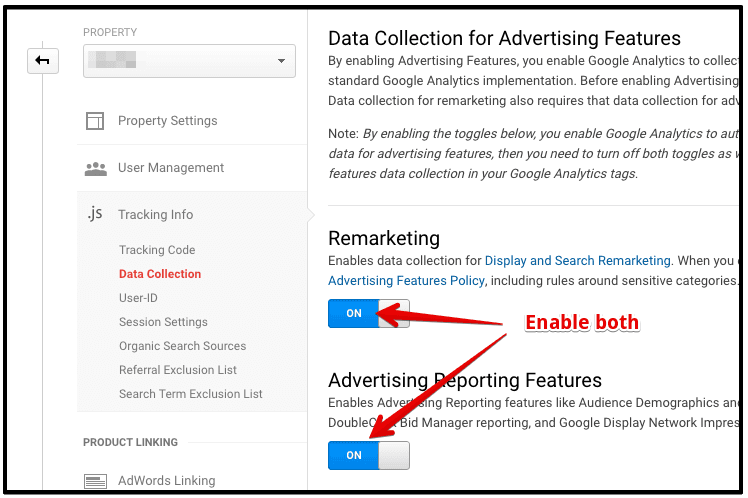How to Leverage Remarketing In Google Analytics for Your Business
How to Leverage Remarketing In Google Analytics for Your Business
Blog Article
Utilizing Remarketing in Google Analytics: A Comprehensive Guide
Taking advantage of remarketing in Google Analytics uses companies a tactical edge in reaching out to potential consumers. This overview will certainly drop light on the vital steps involved in using the complete potential of remarketing in Google Analytics, leading to enhanced advertising outcomes.
Understanding Remarketing in Google Analytics
Remarketing in Google Analytics enables businesses to strategically target users that have formerly engaged with their site or mobile app. By leveraging data from Google Analytics, services can develop personalized remarketing checklists based upon user actions, such as pages checked out, activities taken, or particular goals accomplished. This powerful device enables companies to re-engage with customers that have actually revealed interest in their items or services, eventually increasing the chance of conversion.
Understanding the various sorts of remarketing approaches is critical for a successful project - What Is “Remarketing” In Google Analytics?. Google Analytics supplies different alternatives, including typical remarketing, dynamic remarketing, and remarketing listings for search ads (RLSA) Each kind offers a distinct objective and can be tailored to satisfy particular advertising purposes
Furthermore, analyzing the efficiency of remarketing campaigns is necessary for maximizing outcomes. Google Analytics provides valuable understandings right into the performance of various remarketing strategies, allowing companies to make data-driven decisions and fine-tune their targeting strategy. By continually changing and keeping an eye on remarketing initiatives based upon analytics data, businesses can make best use of ROI and drive success in their marketing campaigns.
Establishing Up Remarketing Projects

After establishing up audience lists, the following action is to link Google Analytics with Google Ads. By connecting these two systems, services can perfectly transfer target market checklists from Google Analytics to Google Ads for remarketing purposes. This combination permits even more accurate targeting and far better project performance.
When the accounts are linked, organizations can produce remarketing campaigns in Google Ads making use of the audience details formerly specified in Google Analytics. These projects can be personalized with particular advertisement creatives, messaging, and bidding approaches to efficiently re-engage with previous site visitors and drive conversions. By following these actions, companies can utilize the power of remarketing to improve their marketing initiatives and increase ROI.
Making Use Of Audience Division Approaches
Predefined sections in Google Analytics permit you to quickly evaluate typical target market groups fresh users, returning individuals, or customers that completed a details goal on your site. Custom sections, on the other hand, allow you to develop one-of-a-kind sections based on details standards that are very important to your organization objectives. Dynamic remarketing lists automatically adjust based on user habits, revealing customized ads to customers that have actually engaged with your website in specific means.
Analyzing Remarketing Efficiency Metrics
Upon examining the effectiveness of remarketing projects in Google Analytics, the evaluation of vital performance metrics offers beneficial understandings into target market engagement and conversion prices. By diving into metrics such as click-through prices (CTR), conversion rates, price per acquisition (CPA), and return on ad invest (ROAS), marketing experts can evaluate the success of their remarketing initiatives. Evaluating these metrics makes it possible for marketers to enhance projects, improve target market targeting, and designate budgets efficiently to boost total remarketing efficiency.
Optimizing Remarketing Methods
When refining remarketing approaches in Google Analytics, concentrating on audience division is paramount for attaining project success. By dividing your target market into certain segments based on their habits, demographics, or passions, you can customize your advertisements better per team. This targeted strategy enhances the chance of engaging individuals that have already shown passion in your services or products, bring about greater conversion prices.
An additional crucial aspect of optimizing remarketing techniques is continually screening and refining your projects (What Is “Remarketing” In Google Analytics?). A/B screening various ad creatives, messaging, or offers can assist you determine what resonates finest with your target market and drives the most conversions. By examining the efficiency of these tests in Google Analytics, you can make data-driven decisions to optimize your remarketing efforts even more
Moreover, leveraging vibrant remarketing can substantially improve your project results. This feature enables you to reveal tailored advertisements to individuals based upon website link their previous communications with your web site, showcasing solutions or items they have formerly seen. By delivering customized web content to individuals based on their actions and rate of interests, dynamic remarketing can aid boost interaction and drive conversions.
Conclusion
In verdict, harnessing remarketing in Google Analytics is a strategic technique to target individuals who have actually previously involved with a website. By developing personalized audience lists and making use of audience segmentation strategies, companies can enhance remarketing projects for increased conversion rates. Assessing performance metrics and constantly enhancing techniques are crucial for optimizing the effectiveness of remarketing initiatives.
Google Analytics provides numerous choices, consisting of typical remarketing, vibrant remarketing, and remarketing listings for search advertisements (RLSA)After setting up audience checklists, the next action is to connect Google Analytics with Google More about the author Ads. By connecting these two systems, businesses can effortlessly move audience lists from Google Analytics to Google Advertisements for remarketing purposes.As soon as the accounts are linked, services can produce remarketing campaigns in Google Advertisements look here using the target market details previously specified in Google Analytics.When refining remarketing approaches in Google Analytics, focusing on audience division is paramount for accomplishing project success.
Report this page